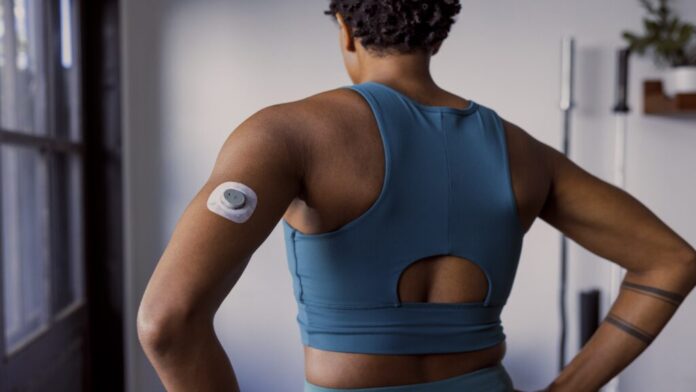"From Diabetes Management to Wellness Revolution: How Continuous Glucose Monitors Are Shaping the Future of Health"
The Rise of Over-the-Counter Continuous Glucose Monitors: A New Era in Metabolic Health
In recent years, continuous glucose monitors (CGMs) have transitioned from specialized medical devices primarily used by individuals with diabetes to accessible wellness tools for the general public. This shift has been catalyzed by major companies like Dexcom and Abbott, which began offering CGMs without a prescription for approximately $100 a month. This development allows any adult to monitor their blood glucose levels in real time, regardless of diabetes status, raising questions about the implications for both health and regulation.
The Intersection of Wellness and Medicine
Historically, CGMs have been essential in managing diabetes, providing critical data to help users dose insulin and avoid dangerous glucose dips. However, a growing number of startups have begun to explore the off-label use of these devices, leveraging the data to promote healthier lifestyle choices and weight loss. Companies like Nutrisense and Levels have emerged, offering apps that analyze glucose data to encourage users to adopt habits that enhance metabolic health.
On August 30, 2024, Dexcom Ventures-backed Signos announced that its app received FDA clearance as a medical device aimed at weight management when used with Dexcom’s Stelo CGM. This marks a significant milestone, as it is one of the first instances where a CGM-related app has been recognized by the FDA for a non-diabetes-related purpose.
Regulatory Landscape and FDA Scrutiny
The FDA has recently intensified its scrutiny of digital health companies, particularly concerning their marketing claims. In July 2025, the agency issued a warning to wearable tech company Whoop, asserting that its blood pressure feature qualifies as a medical device requiring FDA review. This move underscores the FDA’s commitment to ensuring that companies cannot sidestep regulatory oversight by labeling their products as wellness tools.
Michael Schellhous, an attorney specializing in FDA regulations, noted that the FDA is increasingly focused on the implications of marketing language. “Companies are saying, well, I claim that it’s for general wellness purposes, so I don’t have to worry about the FDA,” he explained. “The FDA is now pushing back and saying, well, it really does matter, regardless of what you say.”
The Push for Wearables in Chronic Disease Prevention
Health and Human Services Secretary Robert F. Kennedy Jr. has been a vocal advocate for the widespread adoption of wearables, including CGMs, as part of his "Make America Healthy Again" initiative. He envisions a future where every American wears a health-monitoring device, supported by a national advertising campaign aimed at normalizing the use of such technology.
This initiative is particularly relevant given that over a third of U.S. adults are estimated to have prediabetes, often without their knowledge. Companies like Levels and Nutrisense are marketing their CGMs as tools for managing metabolic health, emphasizing the importance of understanding how diet and lifestyle choices impact blood sugar levels.
The Science Behind Glucose Monitoring
While standardized blood sugar ranges exist for individuals with diabetes, the optimal levels for those without diabetes remain less defined. A recent study from the Framingham Heart Study indicated that healthy individuals typically maintain blood sugar levels between 70 to 140 mg/dL. However, some consumer CGM companies suggest that this range should be even narrower, advocating for levels between 70 and 125 mg/dL.
The implications of these recommendations are significant, as they could influence how individuals approach their health. Nutrisense, for example, encourages users to "take control of your glucose, weight, and overall metabolic health," while also offering the option to work with dieticians to interpret CGM data.
Challenges and Considerations
Despite the potential benefits of CGMs for the general public, experts caution that more research is needed to understand the long-term effects of using these devices. Concerns have been raised about the psychological impact of monitoring blood glucose levels, with some health providers warning that an excessive focus on glucose spikes could lead to unhealthy dietary choices.
Georgetown University’s Susan Schembre emphasized the need for further investigation into how CGMs affect users. “Is it working? Yes. Does it work better in some rather than others? Maybe, maybe not, who knows. Is it hurting anybody? That is another question that I don’t know is being asked properly,” she stated.
Conclusion
The introduction of over-the-counter CGMs represents a significant shift in how blood glucose monitoring is perceived and utilized. As these devices become more mainstream, the line between wellness and medical use continues to blur, prompting regulatory bodies like the FDA to reassess their approach. The potential for CGMs to aid in chronic disease prevention is promising, but it also necessitates a careful examination of the implications for consumer health and safety. As the landscape evolves, ongoing research and regulatory oversight will be crucial in ensuring that these technologies are used responsibly and effectively.
